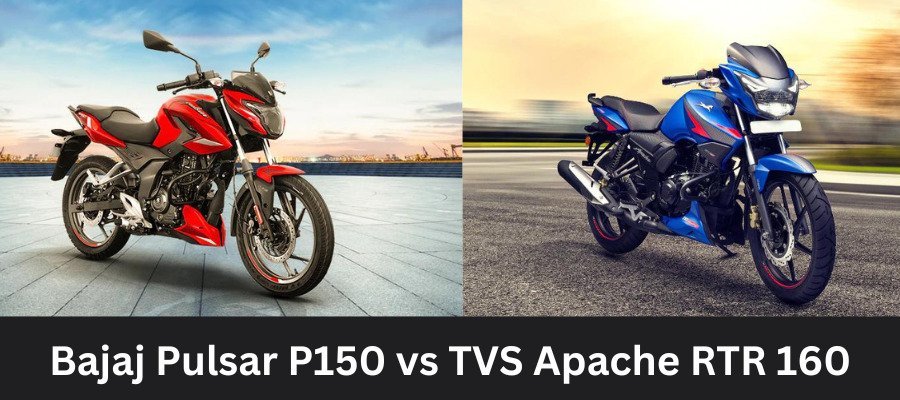
In the 150-160cc motorcycle category, the ‘Bajaj Pulsar’ and ‘TVS Apache’ nameplates have gained a cult following. Since these two motorcycles are in the business for a long time and are still soldiering well despite the introduction of newer and better-equipped motorcycles, an upgrade for both was long due.
The wait finally ended in 2022, with TVS mildly updating the Apache RTR 160 with more features, slightly revised body panels and more performance on tap. On the other hand, the Pulsar 150 gets a whole new successor in the new Pulsar P150. While the old-generation Pulsar 150 is still on sale, Bajaj Auto will phase it out gradually to strengthen itself in the market with the new Pulsar P150. Which one of the two motorcycles manage to win the rivalry this time around? Let’s find out:
Price
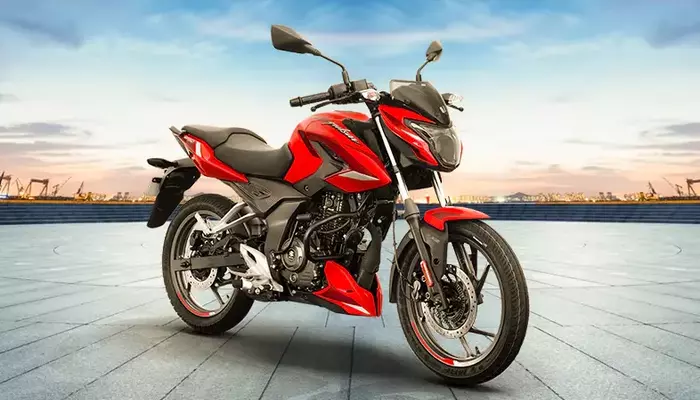
Bajaj has introduced the Pulsar P150 in two versions – while the one with the rear drum brake is priced at Rs 1,16,755, the one with the rear disc brake is available for Rs 1,19,757. On the other hand, the TVS Apache RTR 160 is available in three variants – the base-spec variant with the rear drum brake (Rs 1,17,790), the mid-spec variant with rear disc brake (Rs 1,21,290) and the top-spec variant with rear disc brake and Bluetooth connectivity (Rs 1,24,590).
| Model |
Bajaj Pulsar P150 |
TVS Apache RTR 160 |
| Price |
Rs 1,16,755 – Rs 1,19,757 |
Rs 1,17,790 – Rs 1,24,590 |
(prices mentioned above are ex-showroom, India)
ALSO READ: Kawasaki KLR 650 vs Royal Enfield Himalayan
Engine and Chassis
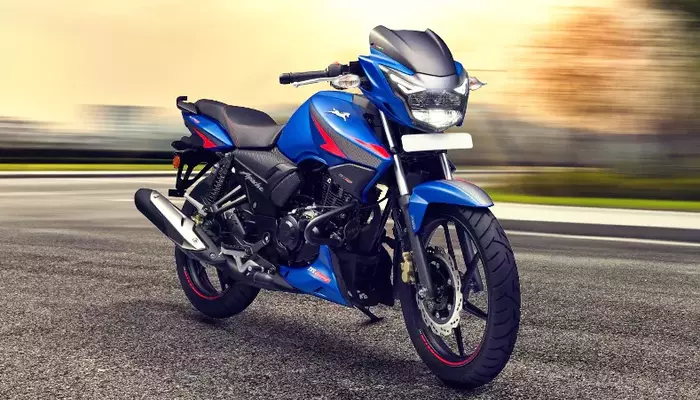
The four-stroke, single-cylinder, air-cooled, two-valve engine of the TVS Apache RTR 160 gains an almost 10cc advantage over the 149.68cc single-cylinder, air-cooled, two-valve engine of the Bajaj Pulsar P150. This lead in engine displacement does give it a 1.5 PS higher power and 0.35 Nm higher torque output over the smaller engine in the Pulsar P150.
While the 37mm telescopic forks of the TVS Apache RTR 160 are bigger and more pliant than the 31mm telescopic forks in the Pulsar P150, the gas-charged mono-shock in the Pulsar P150 feels more well-sorted over the dual gas-charged hydraulic coil springs in the back of the Apache RTR 160. The Apache RTR 160 also gets wider front and rear tyres and a bigger front disc brake in comparison to the Pulsar P150, though the latter gets a bigger disc brake at the rear.
| Specifications |
Bajaj Pulsar P150 |
TVS Apache RTR 160 |
| Engine |
Four-stroke, single-cylinder, two-valve, air-cooled, 149.68cc |
Four-stroke, single-cylinder, two-valve, air-cooled, 159.7cc |
| Power |
14.5 PS @ 8,500 rpm |
16.04 PS @ 8,750 rpm |
| Torque |
13.5 Nm @ 6,000 rpm |
13.85 Nm @ 7,000 rpm |
| Transmission |
5-speed |
5-speed |
| Front suspension |
31mm telescopic forks |
37mm upside-down telescopic forks |
| Rear suspension |
Gas-charged Nitrox mono-shock |
Gas-charged coil springs |
| Front tyre |
80/100-17 (single disc) / 90/90-17 (dual disc) |
90/90-17 |
| Rear tyre |
100/90-17 (single disc) / 110/80-17 (dual disc) |
110/80-17 (single disc) / 120/70-17 (dual disc) |
| Front brake |
260mm disc |
270mm disc |
| Rear brake |
130mm drum (single disc) / 230mm disc (dual disc) |
130mm drum (single disc) / 200mm disc (dual disc) |
| ABS |
Single-channel ABS |
Single-channel ABS |
ALSO READ: Moto Morini X-Cape 650 vs Benelli TRK 502
Dimension
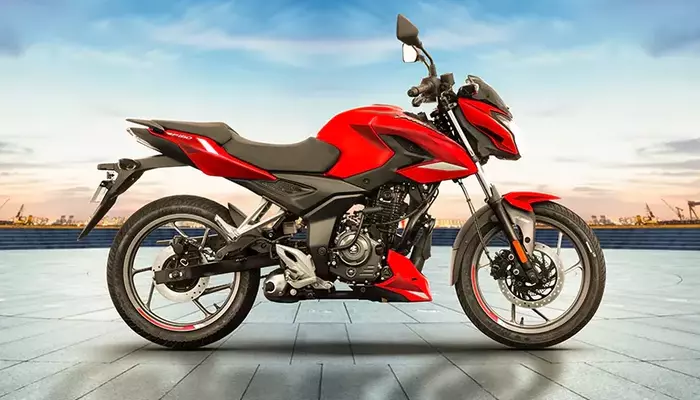
Dimensionally, the TVS Apache RTR 160 is a longer motorcycle than the Bajaj Pulsar P150. However, the Pulsar P150 is wider, taller and a heavier motorcycle of the two. Despite it being longer, the Apache RTR 160 has a smaller wheelbase. It also has a higher ground clearance.
| Dimensions |
Bajaj Pulsar P150 |
TVS Apache RTR 160 |
| Length |
2035mm |
2085mm |
| Width |
750mm |
730mm |
| Height |
1165mm |
1105mm |
| Wheelbase |
1352mm |
1300mm |
| Kerb weight |
140 kg |
137 kg (single disc) / 138 kg (dual disc) |
| Ground clearance |
165mm |
180mm |
| Seat height |
790mm |
790mm |
| Fuel tank capacity |
14 litres |
12 litres |
Design and Features
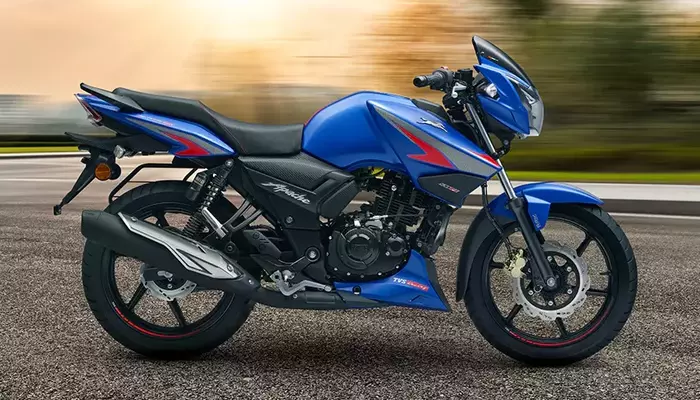
The Pulsar P150 feels a fresher and more radical departure from the previous-generation Pulsar 150, which now feels too long in the tooth. While the Pulsar P150 looks newer, it is lesser aggressive and less muscular than the more powerful and premium Pulsar N160. The Pulsar P150 gets an almost triangular headlamp housing with an LED projector and a unibrow-shaped daytime running LED over it. The Pulsar P150 also gets a sharp and beefy-looking fuel tank adorning the Pulsar nameplate, with its V-shaped tank extensions making the motorcycle look longer. The slim side body panels flow towards the sleek-looking rear panels, which have the trademark parallel-running LED tail lamps in a restyled form. While the single-disc version comes with a tubular handlebar and split seats, the dual-disc versions get clip-on handlebars and split seats. However, both variants of the Pulsar P150 get a semi-digital instrument console with an analogue tachometer and split pillion grab rails.
In this comparison, the TVS Apache RTR 160 feels and is the older motorcycle, though the new mild updates introduced in this motorcycle this year have made it look fresher than before. The new TVS Apache RTR 160 also gets a full-LED headlamp with revised daytime running LEDs, a slightly revised fuel tank which now gets larger extensions and redesigned engine cowl and tail section with a new LED tail lamp. It continues to come with a single long seat, clip-on handlebars and split pillion grab rails, though it now gets a new fully-digital instrument console from the Apache RTR 160 4V. In the top-spec variant, this instrument console is compatible with Bluetooth connectivity.
Verdict
The traditional rivalry between the Pulsar 150 and Apache RTR 160 has been taken forward with these two new motorcycles. In comparison, there’s no doubt that the Pulsar P150 is the newer motorcycle here. Both the motorcycles also fare equally well in comparison to each other – both of them get LED headlamps and tail lamps, standard front disc brake and tubeless tyres, an option of a rear disc brake, split pillion grab rails and seats and clip-on handlebars. However, while the Pulsar P150 gets backlit switchgear and mono-shock, the Apache RTR 160 gets wider front forks, Bluetooth connectivity options and slightly beefier tyre options.
When it comes to mechanicals, it is where the TVS Apache RTR 160 successfully tries to justify its price positioning. With a bigger engine which is more powerful and torquey, the Apache RTR 160 feels like the livelier motorcycle among the two. If you can live with conventional hydraulic coil springs over a mono-shock, we see all the points going in favour of the TVS Apache RTR 160, making it out pick among the two motorcycles.
ALSO READ:
You must be logged in to post a comment Login